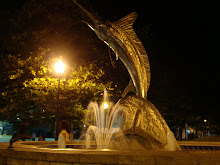Vishal Gurung
ENGL 191 Sec 21
Prof. Specht-Jarvis
Date: 11/03/09
Revised report on Nepal
Nepal is a Himalyan kingdom located in the Southeast Asia landlocked between India and China. It is the second richest country in water resources. In comparison to USA, its area is slightly bigger than the Arkansas state. The population of Nepal was 28.8 million in 2007. 1 Nepal is also one and only “Hindu” kingdom in the world. Also, Nepal has become the youngest Republic in the world with the eradication of Monarchy and participation of different parties in the House of Representative.
Physically, Nepal is known for its natural beauty along with the water resources. Nepal has a variety of climates. It varies from cool smmer and severe winter in North to suptropical summer and cold winter in the south. The highest mountain in the world, Mt. Everest lies in Nepal and it is also the birth place of founder of Buddhism, Lord Gautam Buddha. There many famous tourist destinations in Nepal. People from all around the world comes for trekking, rafting, bungee-jumping, skydiving, mountain viewing, safari hunting or simply view the scenery. Therefore, it is truly called the Shangrila of the world.
The first civilization in Nepal started around 6 B.C. Until 1768, Nepal was divided into small kingdoms ruled by different kings. It was then that Prithvi Narayan Shah from “Shah” dynasty unified these small kingdoms and made a single country “Nepal”. 2 So, there was monarchy in the country until 2008 when King Gyanendra Bir Bikram Shah Dev was forced to quit palace and hand over the ruling power to the leading parties. Even his name was changed to just Gyanendra Shah. Thus Nepal was declared democratic republic in 2008 and the communist party of Nepal (Maoist) joined the government.
Nepal is also culturally rich. It has about 36 main ethnicities which are all categorized under 4 main caste systems, vizually, “Brahmin”, “Chhetri”, “Vaishya”, and “Shudra”. All these ethinicities have their own culture, traditions, languages, and festivals. Hinduism and Buddhism are the two major religions of the country although there are christianity, Muslim, and Islam too. All these people live in harmony with each other and religious tolerance has been practiced for a long time. When it comes to food, Nepal has many variety of food affected by the Indian subcontinent and the Tibetan border. Mainly rice is used day to day accompanied by curry, which is a spicy vegetable dish. Eating rice with your right hand is also a tradition. Marriage is also an integral part of the life. Usually, the marrying age for bride is 20 and for groom is 22. Additionally, Nepalese greet each other by saying “Namaste”, which is joining your two palms in front of you.
49 % of people are literate till now and awareness has been raised to be literate and go to school. 3 Agriculture is main profession of the country (about 71%), although people are increasing in the service and government sector too. 4
Works cited:
http://en.wikipedia.org/wiki/Nepal (October 31st, 2009)
http://www.state.gov/r/pa/ei/bgn/5283.htm (October 21st, 2009)
http://www.state.gov/r/pa/ei/bgn/5283.htm (October 21st, 2009)


No comments:
Post a Comment